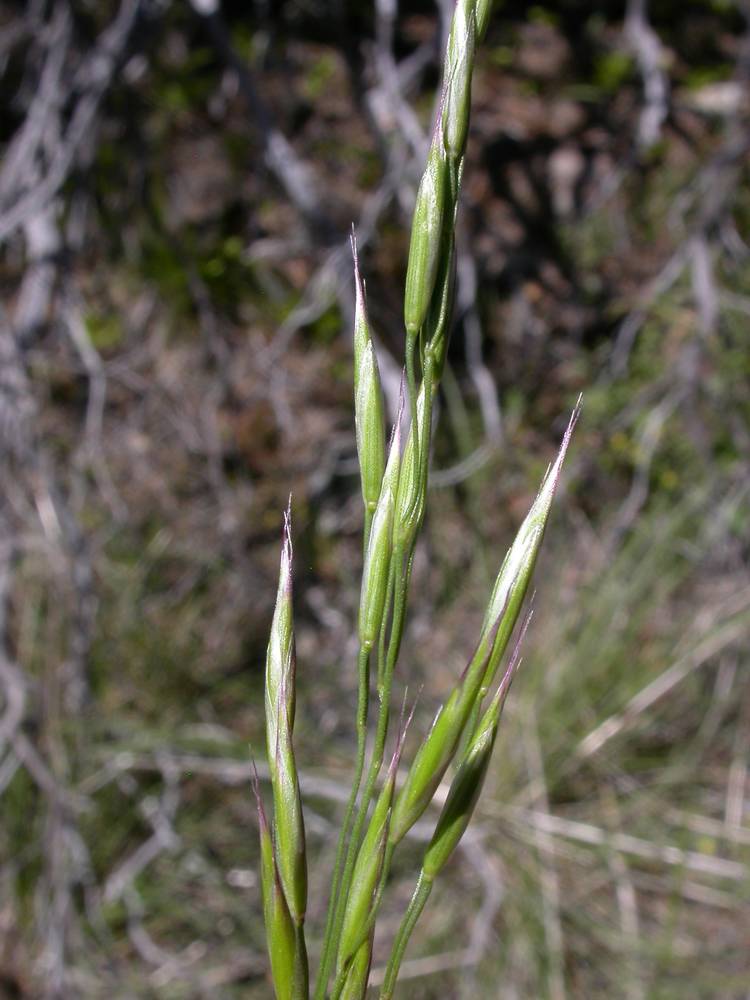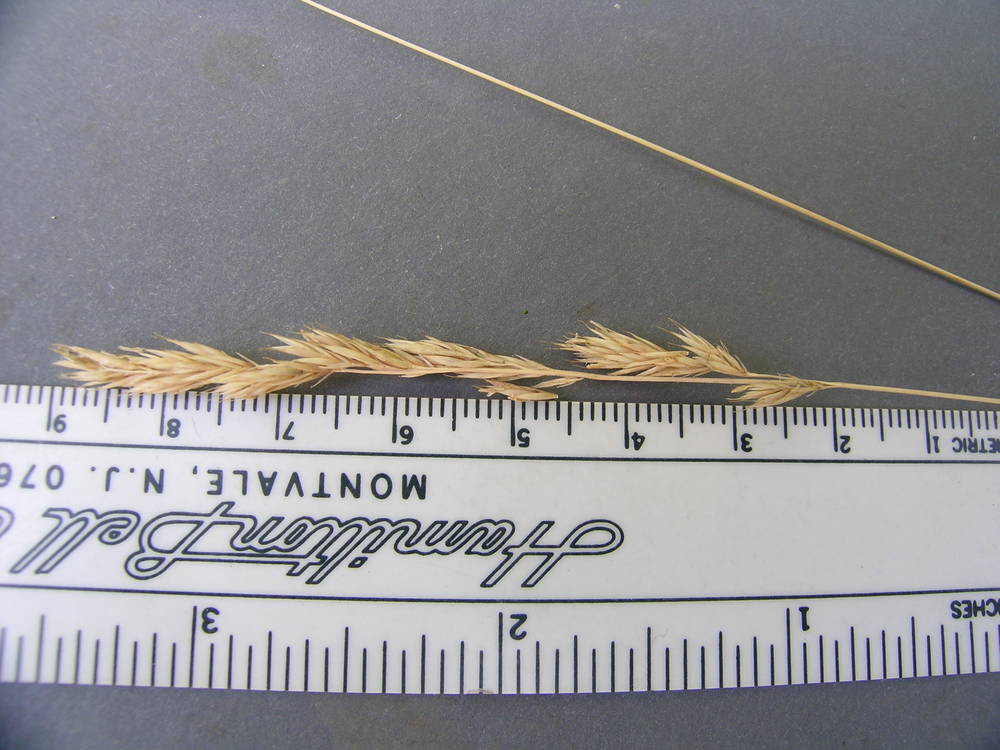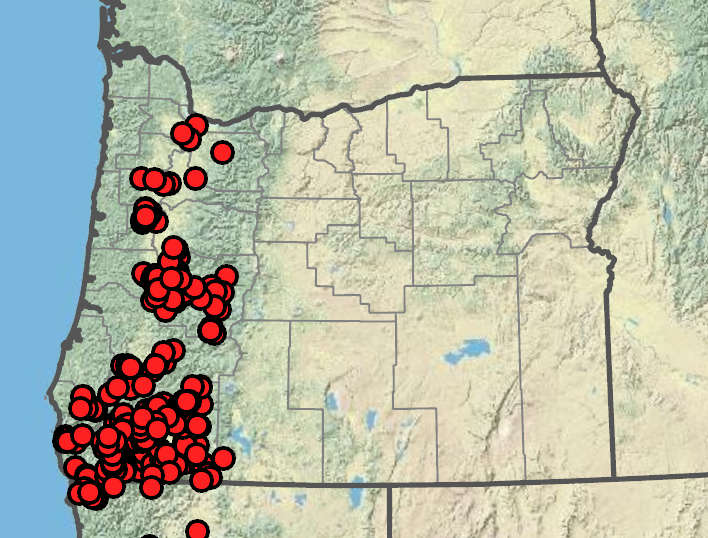Festuca californica
Festuca trachyphylla
California fescue
hard fescue, sheep fescue
intravaginal.
mainly basal;
sheaths open; somewhat flattened, not conspicuously splitting between the veins;
blades 8–30 cm × 0.3–1.2 mm, conduplicate;
inner surface with minute hairs that are much shorter than the leaf is thick;
outer surface glabrous or tomentose.
3–10(30) cm;
branches 1.2– 3.6 cm, appressed after anthesis.
5.5–9(10) mm, 4–7(8) florets.
scabrous at the tip and often along the midrib;
lower glumes 2–4 mm, 1–3-veined;
upper glumes 3–5.5 mm, 3-veined.
2.5–3.5 mm, glabrous.
apex glabrous.
cross sections 0.4–0.6 × 0.7–1.2 mm, elliptic or ovate;
veins (5)7+;
ribs 1–5; dorsal sclerenchyma bands more than 2 times as wide as thick, interrupted or continuous.
(3.8)4–5(5.5)mm, 0(1)-veined, glabrous, scabrous, or with long hairs on margins near tip;
lemma awns 0.5–2.5 mm, usually less than half as long as the lemma body.
(1.6)2–3(3.4)mm.
=28, 42.
Festuca californica
Festuca trachyphylla
Roadsides, disturbed areas, ski slopes, persisting from cultivation or where planted for erosion control, occasionally naturalizing. 0–2800m. BR, BW, Casc, Lava, Sisk, WV. CA, WA; scattered throughout North America; worldwide. Exotic.
Festuca trachyphylla is a fine-leaved bunchgrass with small lemmas and dense inflorescences.Festuca idahoensis and F. roemeri have longer lemmas and more open inflorescences, at least at anthesis. Festuca rubra ssp. commutata has fused leaf sheath margins and leaves that are diamond-shaped in cross section with sclerenchyma bundles less than twice as broad as thick. Festuca valesiaca is very similar but has tighter, less conspicuous leaf sheaths; F. trachyphylla and F. valesiaca are best distinguished by leaf anatomy. The glaucous forms of Festuca trachyphylla are often called sheep fescues and labeled F. ovina, but the name F. ovina is best limited to a species of northern Europe and few cultivars are derived from it. The hard and sheep fescues are sometimes considered part of F. longifolia, but current usage limits that name to a British species, which is rarely cultivated.
Barbara Wilson, Richard Brainerd, Nick Otting
- Local floras:
BC,
CA,
OR,
WA
- Local Web sites:
CalFlora,
CalPhotos,
Flora NW,
PNW Herbaria
WildflowerSearch
iNaturalist (observations)
USDA Plants Database
- LBJ Wildflower Center
- SEINet
- Plants of the World Online
- Encyclopedia of Life
- Wikipedia
- Google Image Search





